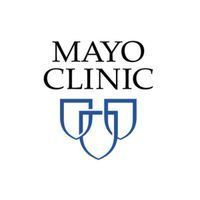Adolescents and Parents Prefer Receiving Medical Information at Diagnosis of Narcolepsy
A questionnaire showed that adolescents with narcolepsy and parents prefer to receive details on narcolepsy at the time of diagnosis from a healthcare provider.

Patients who had higher baseline REM without atonia levels were associated with the largest treatment effects on RSWA with a single 50 mg dose of ulotaront.
Recently published findings from a post-hoc analysis of healthy individuals showed that treatment with 50 mg ulotaront (Sunovion) was associated with reductions in REM sleep without atonia (RSWA) levels, especially in those with greater than average RSWA levels receiving placebo.
This was a randomized, double-blind, placebo-controlled 2-way crossover study of the effect of 10 mg (n = 9) or 50 mg (n = 11) ulotaront in young healthy adults aged 19 to 35 years old. In the original study, 1 group received a single oral dose of either 50-mg ulotaront or placebo followed by a 7-day washout, then crossover to a single dose of the opposite treatment. The second group received a single oral dose of either ulotaront 10 mg or placebo followed by a 7-day washout, then crossover to a single dose of the opposite treatment.
Senior investigator Erik K. St. Louis, MD, co-director, Center for Sleep Medicine,
RSWA levels were higher during baseline/placebo nights when compared to RSWA levels during the ulotaront 50 mg treatment night for 4 key RSWA metrics: submentalis (SM) ‘any’ (P = 0.03) SM + anterior tibialis [AT] phasic density (P = 0.01), combined AT phasic density (P = 0.02), and right AT phasic density (P = 0.01). RSWA levels between ulotaront 50 mg and placebo treatment nights were similar for left AT phasic density (P = 0.10), SM phasic density (P = 0.175), tonic density and REM atonia index (RAI)(both P > 0.90).
Those who had above average RSWA percentile levels in SM + AT phasic density during the placebo trial had greater delta value for change in RSWA between the placebo and ulotaront treatment conditions. "These results suggest that ulotaront may have a dose-dependent treatment effect on lowering RSWA at the 50 mg dose," St. Louis et al wrote. "Further studies are needed to investigate the potential efficacy, safety, and dose requirements of ulotaront as a potential symptomatic therapy for REM sleep behavior disorder."
A questionnaire showed that adolescents with narcolepsy and parents prefer to receive details on narcolepsy at the time of diagnosis from a healthcare provider.
Investigators also found that the RSWA percentage change in the 50 mg group was non-significantly higher for those with above average RSWA percentiles (n = 5) than those with below average RSWA percentiles at baseline or those on placebo for combined SM + AT phasic density (P = .25). Change in RSWA between placebo and the high dose ulotaront group was near 0% in individuals having below average RSWA percentiles at baseline.
In terms of the 10 mg dose group, all individuals RSWA metrics were within the normative range following treatment. Delta RSWA was different only for SM duration (P = .048), but there were no differences for any of the other visual or automated RSWA metrics between the 10 mg group and placebo treatment nights. Notably, treatment with 10 mg ulotaront resulted in no changes in RSWA that impacted REM sleep duration.
Ulotaront is currently being investigated in other disorders as well, and was granted breakthrough therapy designation by the FDA for the treatment of schizophrenia in 2019. It is the first TAAR1 agonist to enter phase 3 clinical trials for adults and adolescents with schizophrenia. In December 2022, Sunovion announced the first patient enrolled in a phase 2/3 study of ulotaront in major depressive disorder (MDD), making it the first TAAR1 agonist to be studied as an adjunctive therapy for patients with that condition.
Keep your finger on the pulse of neurology—subscribe to NeurologyLive for expert interviews, new data, and breakthrough treatment updates.